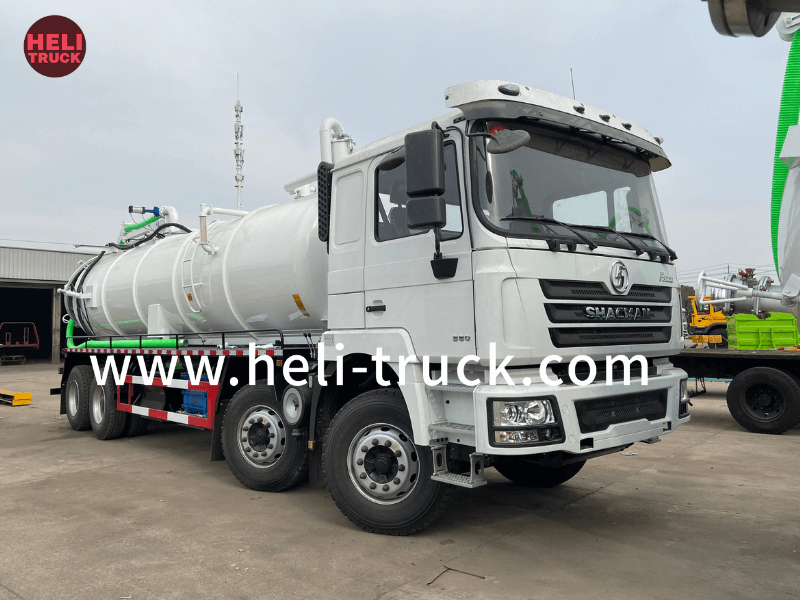Vacuum Truck Dry Waste Collection Revolutionizing Waste Management
Introduction
Proper waste management is a critical aspect of maintaining a clean and healthy environment. As the global population continues to grow, the generation of waste also increases, posing significant challenges for waste management systems. In the past, waste collection methods involved manual labor and traditional garbage trucks. However, with advancements in technology, vacuum truck dry waste collection has emerged as a highly efficient and environmentally friendly alternative. This article explores the benefits, working principles, and applications of vacuum truck dry waste collection in waste management.
1. Understanding Vacuum Truck Dry Waste Collection
1.1 Definition and Overview
Vacuum truck dry waste collection is a waste management technique that utilizes specialized vehicles equipped with powerful vacuum systems to collect dry waste materials. These trucks are commonly used for the collection of various types of dry solid waste, such as sawdust, sand, gravel, and construction debris. The vacuum system creates a negative pressure inside a sealed tank, sucking in dry waste materials through a hose connected to a collection nozzle.
1.2 Benefits of Vacuum Truck Dry Waste Collection
1.2.1 Efficiency and Time-saving
One of the significant advantages of vacuum truck dry waste collection is its efficiency in waste collection. The powerful vacuum systems allow for rapid and thorough waste removal, reducing the time required for waste collection processes. Compared to conventional waste collection methods, vacuum trucks can collect large volumes of dry waste in a significantly shorter time frame.
1.2.2 Versatility
Vacuum truck dry waste collection is highly versatile and can be applied in various industries and sectors. From construction sites to manufacturing facilities, the vacuum truck technology can efficiently collect and transport dry waste materials, ensuring a clean and safe working environment.
1.2.3 Improved Occupational Safety
Manual waste collection can pose numerous risks to workers, including injuries from heavy lifting, exposure to hazardous materials, and ergonomic issues. Vacuum truck dry waste collection minimizes these risks by eliminating the need for manual labor, thus improving occupational safety for waste management personnel.
1.2.4 Environmental Friendliness
Vacuum truck dry waste collection is an environmentally friendly waste management method. The advanced vacuum systems reduce the amount of dust and debris released into the atmosphere during waste collection, leading to improved air quality. Additionally, the sealed tanks of the vacuum trucks prevent waste spillage and leakage, minimizing the risk of soil and water contamination.
2. How Vacuum Truck Dry Waste Collection Works
2.1 Components of a Vacuum Truck
A vacuum truck used for dry waste collection consists of several key components that work together to ensure efficient waste removal.
2.1.1 Vacuum System
The vacuum system is the heart of the vacuum truck, responsible for creating the negative pressure required for waste collection. It consists of a powerful vacuum pump, usually powered by a diesel engine, and a series of hoses and valves.
2.1.2 Collection Nozzle and Hose
The collection nozzle is connected to the vacuum system via a flexible hose. It is designed to efficiently collect dry waste materials, such as sawdust or gravel, and transfer them into the vacuum truck tank. The hose connects the collection nozzle to the vacuum system and allows for flexible maneuverability during waste collection.
2.1.3 Sealed Tank
The vacuum truck is equipped with a sealed tank that serves as the primary storage for collected dry waste. The tank is designed to withstand the negative pressure created by the vacuum system, ensuring a secure and leak-proof environment for waste transportation.
2.2 The Waste Collection Process
The vacuum truck dry waste collection process involves several steps that ensure efficient waste removal.
2.2.1 Preparation
Before beginning the waste collection process, the vacuum truck operator ensures that the truck is in proper working condition and the collection nozzle and hose are securely connected. Safety measures, such as wearing appropriate personal protective equipment, are also taken.
2.2.2 Waste Collection
The vacuum truck operator positions the collection nozzle near the dry waste material to be collected. The vacuum system is then activated, creating a negative pressure inside the collection nozzle, which sucks in the dry waste. The waste is transported through the hose and deposited into the sealed tank of the vacuum truck.
2.2.3 Tank Disposal

Once the vacuum truck tank is full, the waste is transported to an appropriate disposal facility. Depending on the type of waste collected, it may be recycled, incinerated, or disposed of in a landfill in accordance with local regulations.
3. https://www.heli-truck.com/garbage-compactor-truck/ of Vacuum Truck Dry Waste Collection
3.1 Construction and Demolition Sites
Construction and demolition sites generate large volumes of dry waste, including debris, sawdust, and rubble. Vacuum truck dry waste collection is widely used in these environments to efficiently collect and remove the waste materials, ensuring a safe and clean construction site.
3.2 Manufacturing and Industrial Facilities
Manufacturing and industrial facilities produce various types of dry waste, such as sand, gravel, and metal shavings. Vacuum truck dry waste collection offers an efficient and time-saving solution for waste removal in these settings, minimizing the risk of accidents and ensuring a tidy working environment.
3.3 Municipal Waste Management
Vacuum truck dry waste collection can also be applied in municipal waste management systems. It provides an efficient method for collecting dry waste from public areas, such as parks, sidewalks, and streets. The versatility of vacuum trucks allows for easy access to areas that are challenging to reach with conventional waste collection methods.
4. Conclusion
Vacuum truck dry waste collection has revolutionized the field of waste management, offering numerous benefits over traditional waste collection methods. Its efficiency, versatility, improved occupational safety, and environmental friendliness make it an ideal choice for various industries and sectors. As waste generation continues to increase, vacuum truck dry waste collection proves to be a valuable solution in maintaining clean and healthy environments. By embracing this innovative technology, waste management systems can keep pace with the growing demands of waste collection and contribute to a sustainable future.